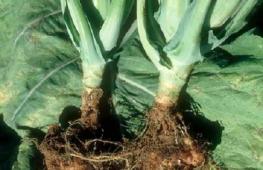How to make white chalk. How to make chalk with your own hands
The main component of chalk is calcium carbonate (CaCO3) - a form of limestone. Limestone deposits are formed from coccoliths - shells of tiny flagellated plates created from the decomposed skeletons of plankton. To make pastel crayons, the basis is calcium sulfate (CaSO4), which is extracted from an evaporite mineral that is formed from salts of ocean water.
Chalk and dehydrated gypsum have similar properties. Pastel crayons also contain clay and oils that bind the components and make the color last. Thanks to this composition, the crayons have a velvety structure, glide smoothly over the surface and do not crumble. Although production pays special attention to removing impurities, a certain amount still remains. The main ones are: silicon, aluminum, iron, phosphorus and sulfur. Manganese, copper, titanium, sodium oxide, potassium oxide, fluorine, arsenic and strontium are present in smaller quantities.
Chalk production process
A limestone quarry is being developed to produce chalk; This is usually open source development. The limestone is then crushed and ground together with water in a ball crusher (a rotating steel drum with water sprayed inside). At this stage, foreign impurities are washed out of the limestone, leaving a pure powder.
The extraction of gypsum is exactly the same as that of limestone. The difference is that the gypsum must be dehydrated to produce calcium sulfate. This happens in a special chamber where the gypsum is heated to a temperature of 116-121 degrees Celsius. When boiling, 12 to 15 percent of its mass is evaporated. Next, the plaster is heated to 204 degrees and in this form is taken out of the chamber. Then the mass is placed in a vibrating screen, where large particles are sifted out. The powder is then washed again, dried, bagged and sent to the chalk manufacturer.
At the crayon factory, the chalk or calcium sulfate is ground again. To produce school crayons, water is added to the mass and brought to the consistency of clay. Then the mass is stamped and cut into bars about 60 cm long, which are placed in a special mold, five pieces each. This form is sent to the oven, where the mass is kept for four days at a temperature of 85 degrees Celsius. Then the hardened crayons are cut into bars 80 mm long. To make colored crayons, pigments are mixed with a dry base, and only after that water is added and the production cycle described above begins.
In the warm season, drawing with crayons on the asphalt is one of the kids’ favorite activities! Of course, given the modern assortment in stores, you can buy crayons without any problems, but it will be much more interesting for a child to draw with multi-colored crayons of interesting shapes or giant crayons that no one else on the playground will have!
There are many recipes for homemade crayons: liquid, with glitter, ice-based chalk... But we offer a proven version made from gypsum, for which there are many ideas for using! In addition, such chalk is guaranteed to be made at home the first time!
How to make chalk with your own hands at home
You will need:
- plaster (can be purchased at craft stores or hardware stores)
- warm water
- ice trays, plastic cups
- cardboard sleeves
- baking parchment
- scotch
- food coloring or acrylic paint

Source: laughingkidslearn.com
Cooking process:
- To prepare multi-colored crayons, you need to prepare several plastic cups, in each of which you need to prepare a mixture of a certain color.
- For one serving you will need 1 glass of gypsum, half a glass of warm water, 1 tbsp. l. acrylic paint or dye. For a more concentrated color, add a little more paint.
- In any plastic bowl or plastic glass, stir the plaster with the paint, but do it quickly, as the mixture hardens in 10-15 minutes. At the same time, prepare the same mixture with other colors of paint and alternately apply plaster into ice molds, as shown in the figure below.

Source: laughingkidslearn.com
It is better to transfer the plaster into molds using a plastic spoon, then you need to smooth the surface well and leave the chalk to harden on the windowsill.
If you are afraid that you won't be able to quickly fill the molds with different colors, you can fill them with plaster of one color, for example pink, and then add a little uncolored white mixture on top and mix in a circular motion. This will give you chalk with streaks.

Source: laughingkidslearn.com
How to make chalk with your own hands using ice molds and plaster, watch the video:
Source: YouTube
Using the same recipe, you can make giant-sized chalk for children, which no one else will have in kindergarten or on the playground. To do this, you will need cardboard toilet paper rolls, baking paper or foil and tape.
- To begin, cover one end of the sleeve with foil and tape it so that you get a closed cup. Prepare a colored mixture of plaster and use a spoon to press it firmly into the space of the sleeve.
- Leave the bushings to dry on the windowsill in an upright position.


Summer is in full swing and, of course, our children spend a lot of time outdoors! And drawing with crayons on the asphalt is their favorite pastime!
1:767 1:777Today we bring to your attention a master class on how to make crayons for drawing with your own hands? You can, of course, buy them in a store, but believe me, they get used up or lost so quickly that you will get tired of going to stores to buy them. And so, you will always have crayons of any color and size in your house!
1:1342Well, shall we get started?
1:1378 1:1388
2:9
How to make colored crayons with your own hands:
2:101So, to make colored crayons with your own hands we will need:
2:223 2:233
- gypsum,
- molds into which we will pour the finished mass; ice molds, plastic cases from Kinders, any molds and even toilet paper rolls are perfect for this.
- petrolatum,
- disposable cups,
- a stick or spoon with which we will mix the plaster,
- paints (gouache, tempera, children's paints in a bottle. We tried using food coloring, but such crayons stain your hands very strongly),
- a paper tray for eggs, which we will use as a holder for molds (if, for example, you chose Kinder Surprise eggs for filling)
Let's start manufacturing.
3:1873Grease the inside of the molds with Vaseline. Place the molds in an egg carton.
3:163 3:173In disposable cups, mix gypsum with water in a ratio of 1.5:1. To make it easier to maintain the proportion, we use one glass for plaster and one for water. Pour the plaster into the water.
3:496 3:506Using a stick, mix the contents thoroughly until you get a homogeneous consistency. The mixture should not be too thin, otherwise the plaster will not dry out and not too thick.
3:835 3:845 3:849 3:859In order for the crayons to be colored, add any chosen dye, 1-2 spoons, depending on what color you need. (If you take tempera, you need to add about 1 teaspoon. Tempera is also sold in powders, in this case it is added from 1 tablespoon; in the process of adding, you will see for yourself how much is needed to achieve a particular color)
3:15133:9

Stir well and quickly, as the plaster hardens quickly.
4:636 4:646
Once the mixture is ready, pour it into molds. If bubbles appear, stir the mixture with a stick.
5:1367 5:1377
ATTENTION!
6:34If at the end of the work you have a small amount of plaster left, do not pour it into the sink or toilet! Allow the plaster to harden well and throw it into a bucket.
6:369 6:379If you poured gypsum into Kinder halves, then after 5 minutes, when the mixture thickens, you can connect the egg halves, pressing them tightly, you can shake the egg thoroughly, thereby making sure that both halves are tightly held together.
6:829 6:839
After an hour you can take out the crayons, but you can let them sit longer.
7:1483 7:1493
8:9
If your child is an “avid artist,” then you can make larger crayons - use cardboard toilet paper rolls for these purposes, having previously sealed their “bottom” with tape or plasticine!
8:389 8:399

These crayons will last your child a long time!
10:151310:9

That's all the difficulties.
11:562 11:572
Drawing on the asphalt with crayons is a very popular pastime among children.
Today we will learn how to make crayons with our own hands. The recipe is quite simple.
The most important ingredients:
a) plaster (possibly alabaster), b) waxed or parchment paper, c) acrylic paints.
Other necessary things: cardboard tubes of toilet paper or paper towels, one for each chalk, scissors, tape, old newspapers, unnecessary containers.
Gypsum is needed at the rate of 3/4 cup per 1 future crayon. Accordingly, 6 crayons, as in the photo, require 4.5 cups of plaster.
Step 1. Make blanks for crayons. If using paper towel tubes, cut them in half. Use toilet paper packaging in its current form :)


Step 2. Cover one side of the blanks with tape so that the contents do not spill out.
Step 3. Line the inner surface of the blanks with paper (approximately 15x15 cm), rolling them into tubes. They should protrude beyond the top edge of the workpiece.
Step 4. Prepare the solution. Mix 1 cup of gypsum with 3/4 cup of water. We pour gypsum into water, not vice versa! We work quickly, very soon the plaster will begin to harden.
Step 5. Add acrylic paints to the solution. You can adjust the brightness of the chalk yourself, you can add a little more paint, the chalk will be brighter.
Step 6. Fill the tubes with the resulting solution. Do not allow air bubbles to appear, otherwise there will be holes in the chalk!
Step 7. Dry the product. This takes about 3 days. On the last day, remove the tape from the underside to allow it to dry.
Step 8: Remove the protective paper and cardboard tube.
Step 9. Send the kids out into the yard and enjoy their creations :)
Do you want to do something interesting with your children? DIY materials for creativity and development? Then this article is for you. We have put together a whole selection of the best recipes for making your own materials for children's creativity and development: chalk and unusual wax crayons, plasticine for modeling and plasticine for crafts, “toffee” and “dancing liquid”, even three-dimensional paints – all this can be done with your own hands, practically from scrap materials that you have in your kitchen.
How to make chalk with your own hands
To make colored crayons for drawing on asphalt, you will need plaster of Paris, warm water, and any acrylic paints. And also gloves, containers for mixing plaster with water, molds for casting.
First, we prepare the molds, since the finished plaster hardens quickly. It's very convenient to use cylinders from old markers, but anything will do. We insert bags inside the molds so that it is convenient to remove the finished crayons later.
Now mix the plaster with warm water (for 3 cups of plaster - 1.5 cups of water), add paint and mix. Pour the colored plaster into the molds, mix again to release the air (for example, with a knitting needle) and wait until it hardens (a couple of days). The larger the mold, the longer it takes to dry.
How to make wax crayons with your own hands
Strictly speaking, we suggest that you do not make wax crayons, but remake them. First, we collect the fragments of wax crayons. As soon as you accumulate more, you can start. There are two main ways: melt the crayons in a water bath and pour them into molds, or put the crayons into molds and bake them in the oven.
In the first case, you can use a variety of molds, from marker tubes to ice cube trays. If you decide to make in the oven, then the molds must be resistant to high temperatures. Fill the molds one-third full with crayon scraps and bake for 15 minutes in a 300ºC oven. Then the wax crayons must be cooled. In both the first and second cases, crayons can be colored or multi-colored.
Psychologists advise making wax crayons in the form of pebbles - multi-colored stones. These crayons are easy to hold even for little ones.
How to make plasticine for modeling with your own hands

Multi-colored, soft and non-stick modeling clay is easy to make with your own hands. We will need hot water, vegetable oil, flour, salt, citric acid and food coloring (or gouache).
First, mix 2 cups of flour, 1 cup of fine salt and 1 tablespoon of citric acid. Then pour 2 glasses of water into the pan, add a tablespoon of odorless vegetable oil, as soon as the mixture begins to boil, remove from heat. Pour the hot mixture into the container with flour and stir. Gradually the flour will begin to brew and our dough will thicken. As soon as it cools down a little, we begin to knead the dough with our hands until it is soft and elastic. The dough should not stick to your hands.
Now we divide the dough into parts, roll them into balls and tint them (you need to make a depression in the dough ball, drop a little liquid food coloring there and mix). You can even add glitter to the finished plasticine.
Homemade plasticine turns out beautiful, but tasteless (salty), so you can give it even to kids. You need to store homemade plasticine in a tightly closed container to prevent it from drying out, preferably in the refrigerator.
How to make plasticine for crafts with your own hands
Homemade plasticine for crafts is also made from water, flour and salt; you also need starch. Take half a glass of flour, half a glass of salt, a spoonful of starch and mix everything. Starch gives plasticine a beautiful white color and makes it more flexible. Then add water to the resulting dry mixture, one tablespoon at a time, kneading the dough with your hand. Add water until we have a round dough ball. Plasticine for crafts is usually not painted (the finished craft is painted), but if you need to, you can tint it with acrylic paints.
How to make “toffee” to develop fine motor skills with your own hands

Take PVA glue and starch in equal proportions, mix and, dividing into portions, tint with liquid food coloring. Stir again and the “toffee” for developing fine motor skills is ready.
How to make “dancing liquid” for the development of fine motor skills with your own hands
To make a “dancing liquid” at home, you need to mix starch with water in a 2:1 ratio and tint the finished mixture with food coloring.
Children are attracted by the unusual properties of the “dancing liquid”, because its structure changes depending on the force of resistance. Hit it with your fist, the liquid will turn into an elastic mass, dip your fingers into it and it will flow down your hand. And if the “dancing liquid” is poured into a tray and placed on a running washing machine or column, the liquid will really dance. Try it, it's quite funny.
How to make volumetric paints with your own hands
 Mix 1 tablespoon pancake flour and 1 tablespoon fine salt, stir and add a little water, then food coloring. Mix everything and you can paint, preferably with a thick brush on thick paper or cardboard. Paints acquire volume when heated; for this, the finished drawing can be placed in the microwave for 10-30 seconds.
Mix 1 tablespoon pancake flour and 1 tablespoon fine salt, stir and add a little water, then food coloring. Mix everything and you can paint, preferably with a thick brush on thick paper or cardboard. Paints acquire volume when heated; for this, the finished drawing can be placed in the microwave for 10-30 seconds.
We hope you enjoyed these easy making recipes. materials for children's creativity and development with their own hands. Share your experiences and ideas in the comments!


